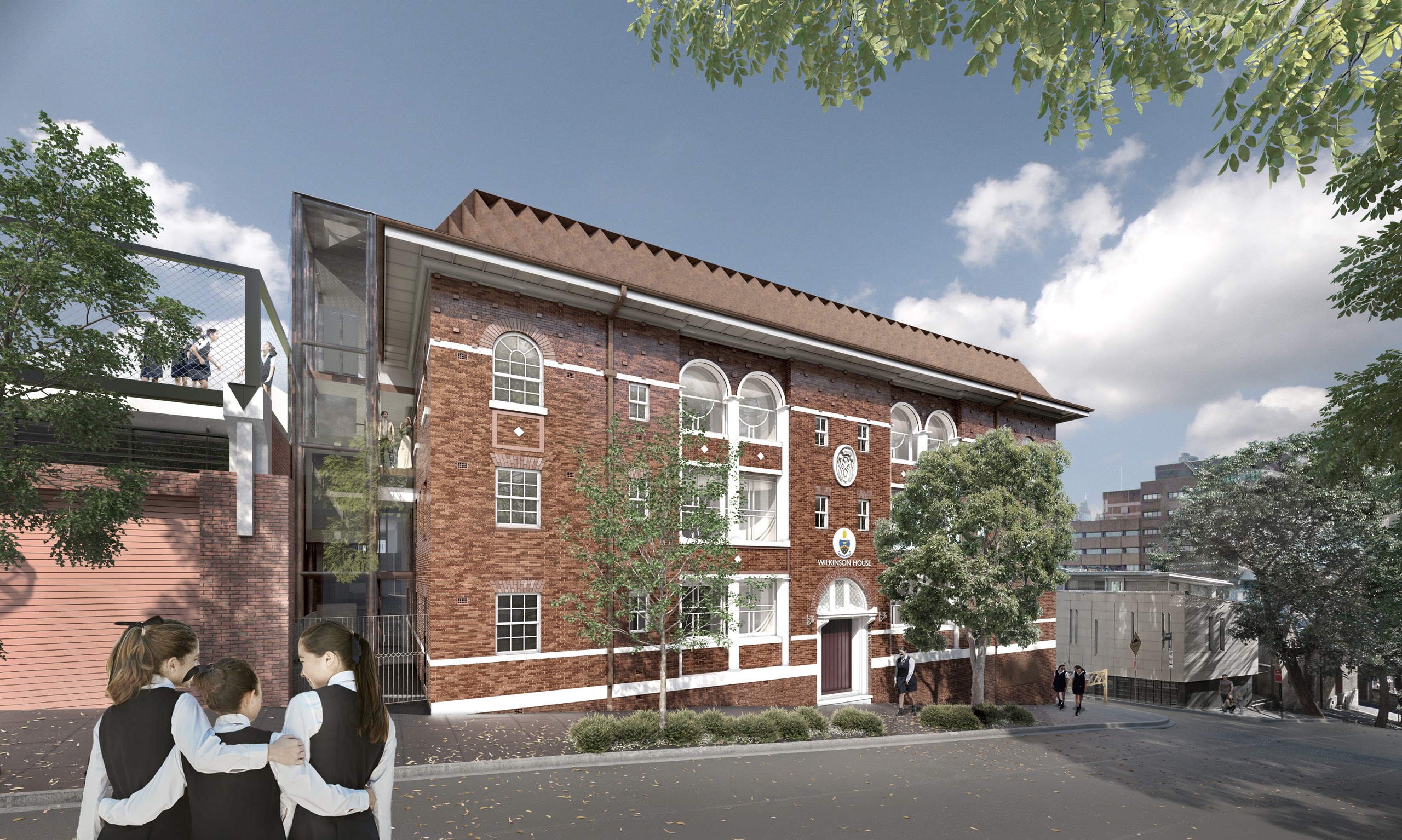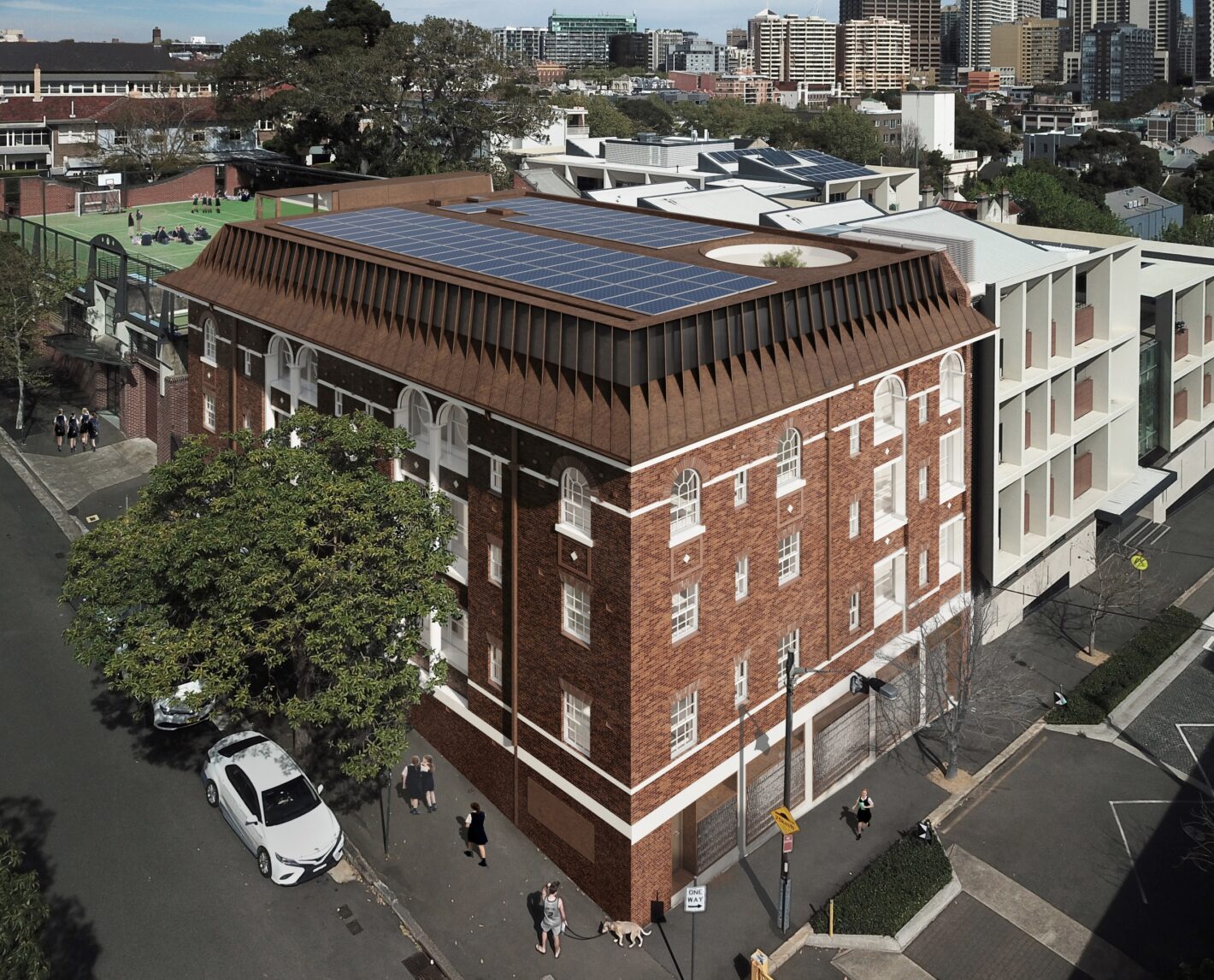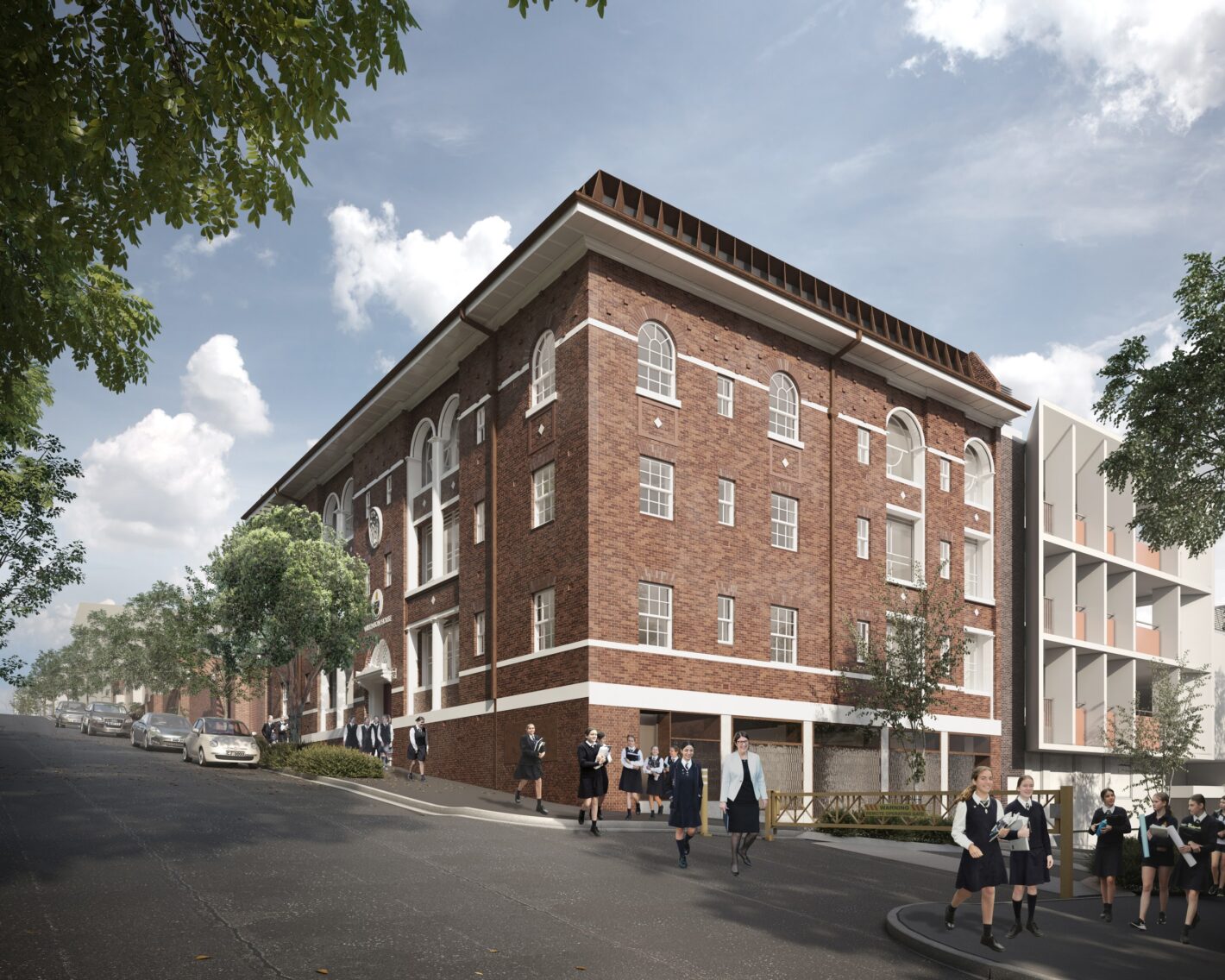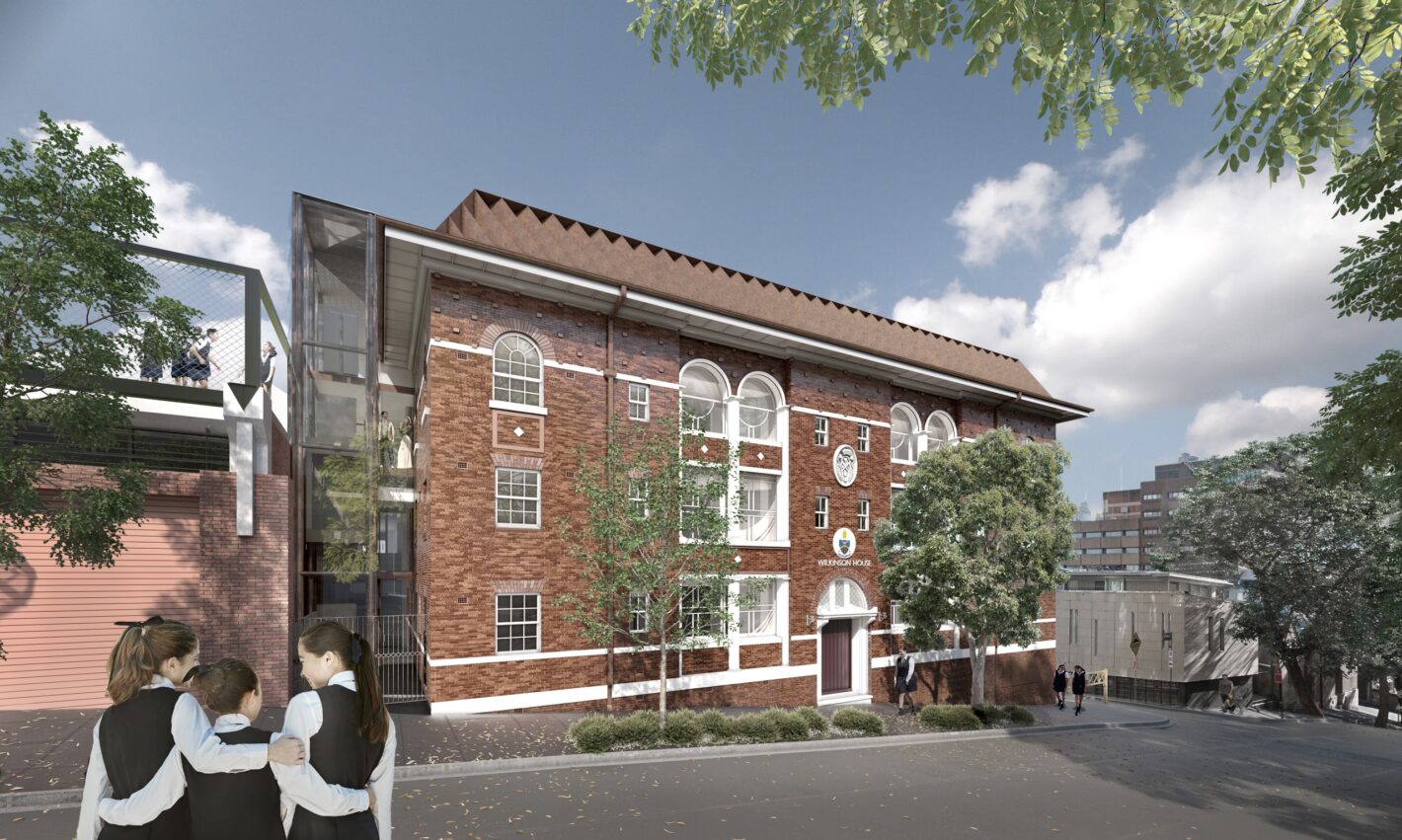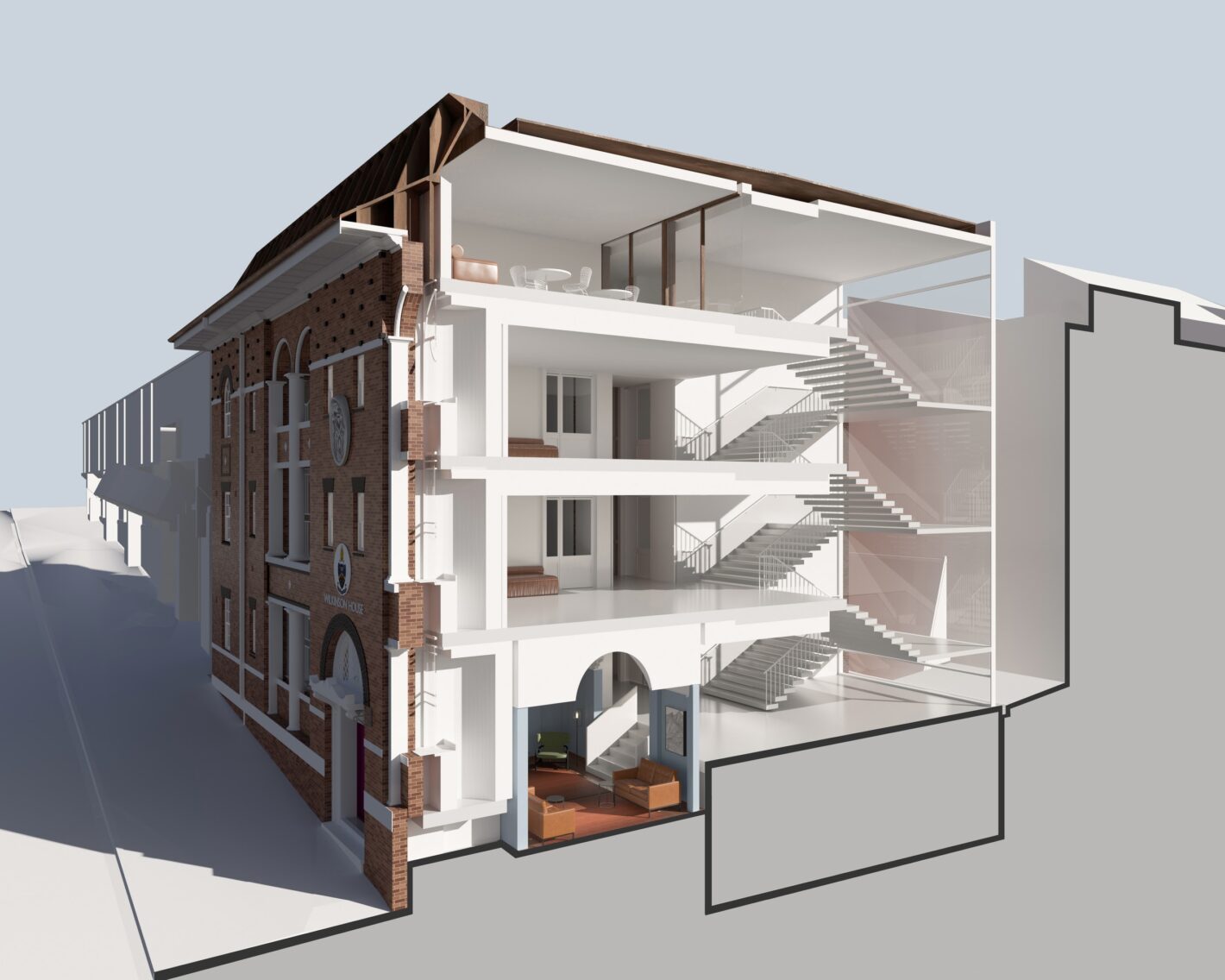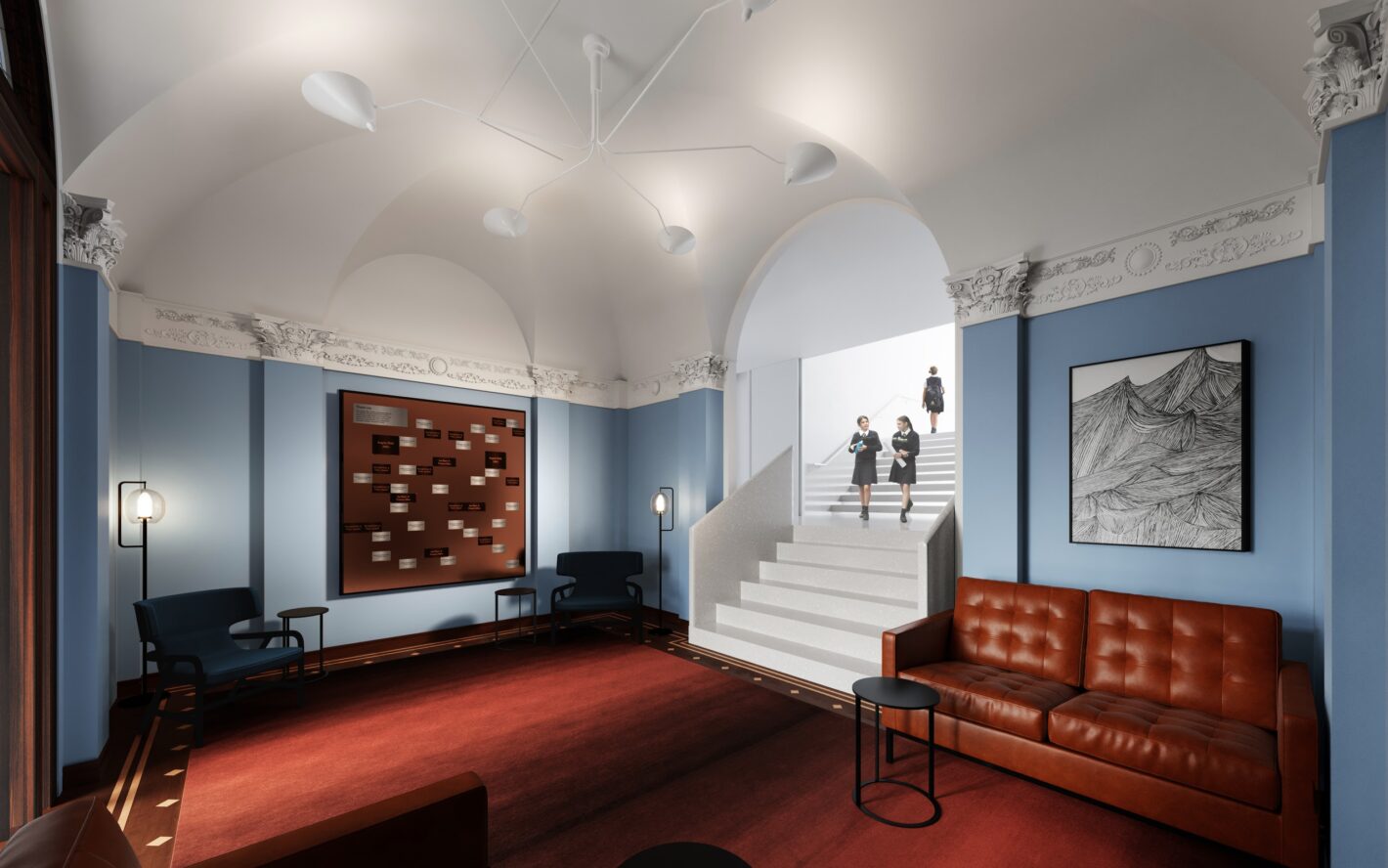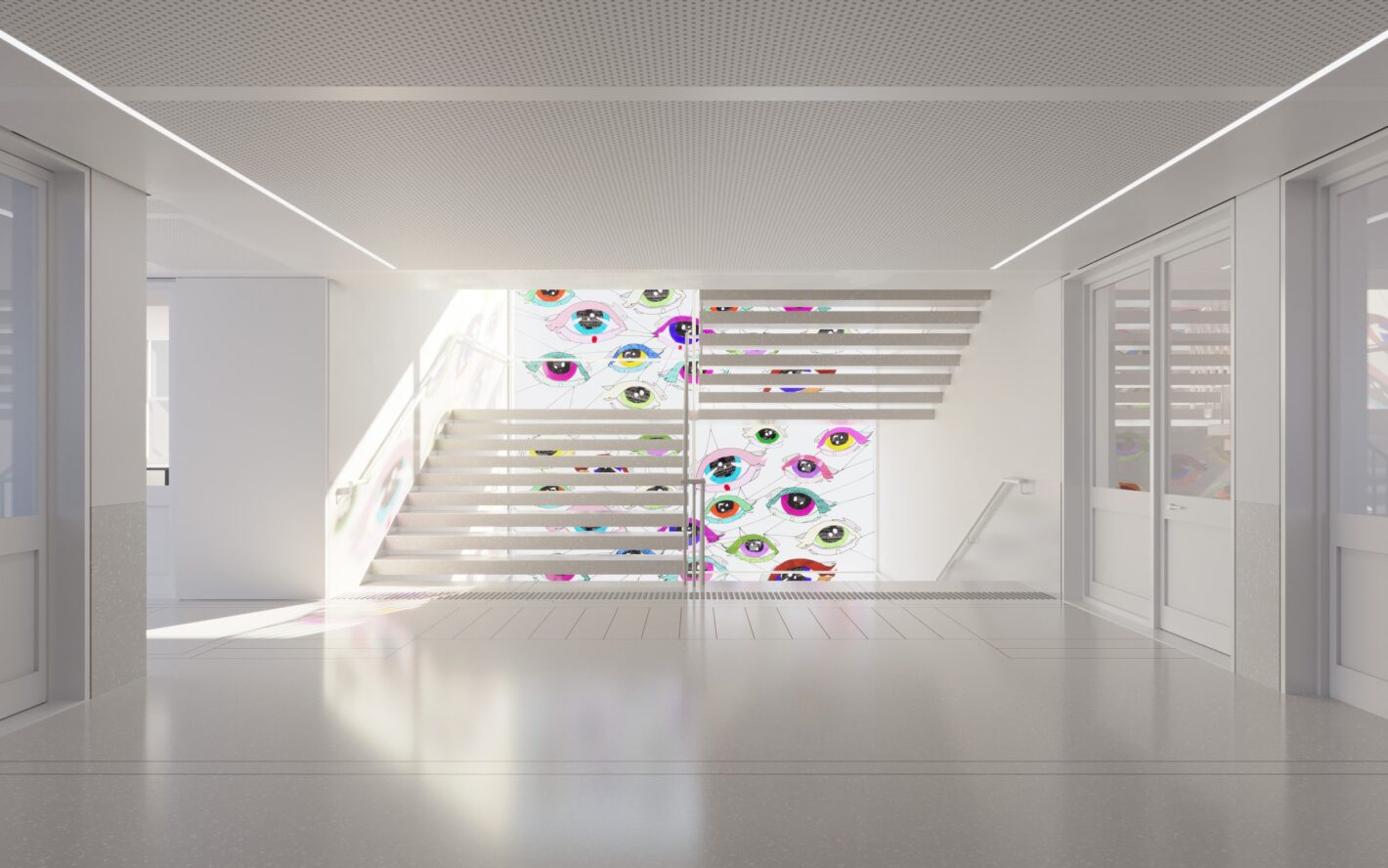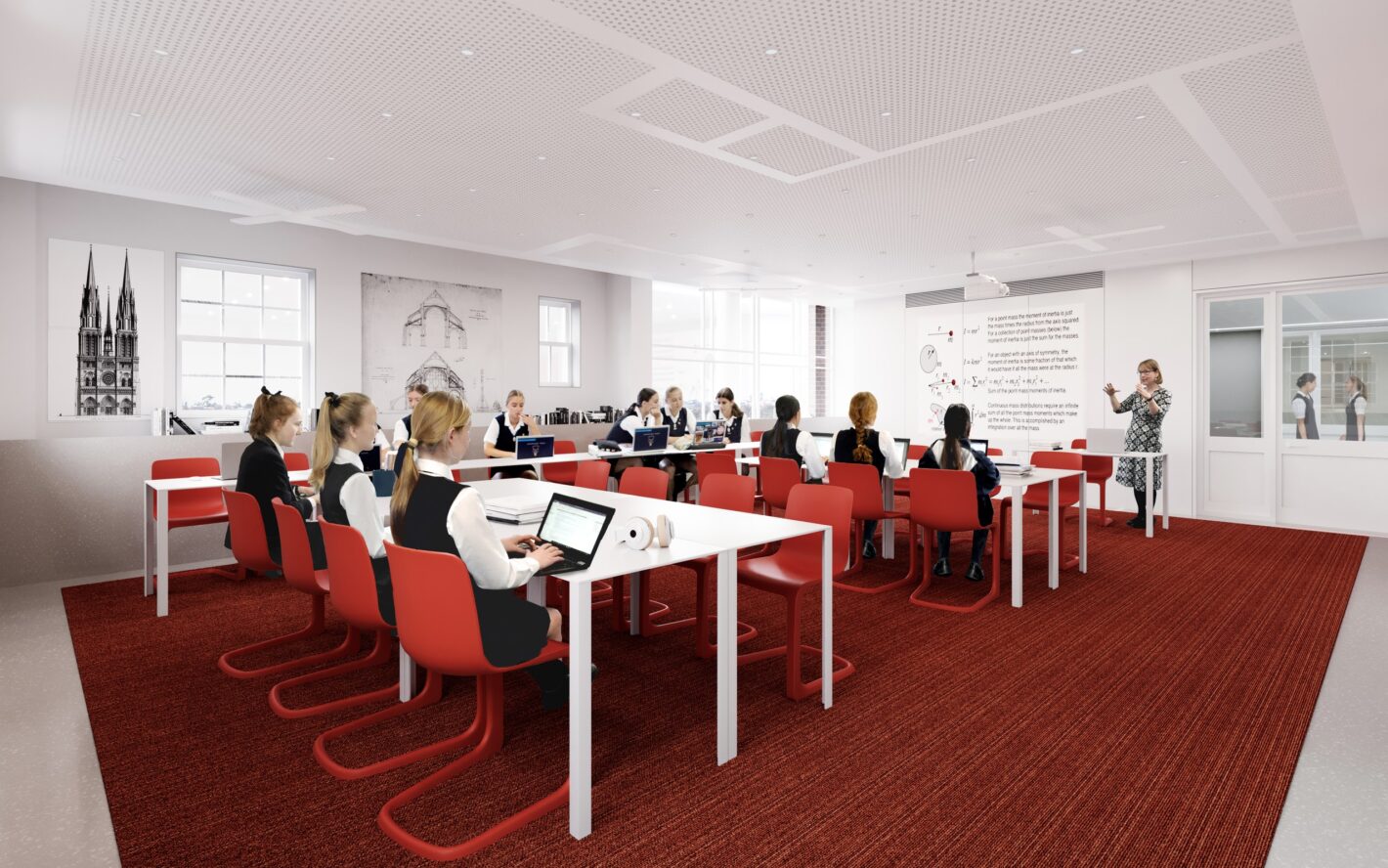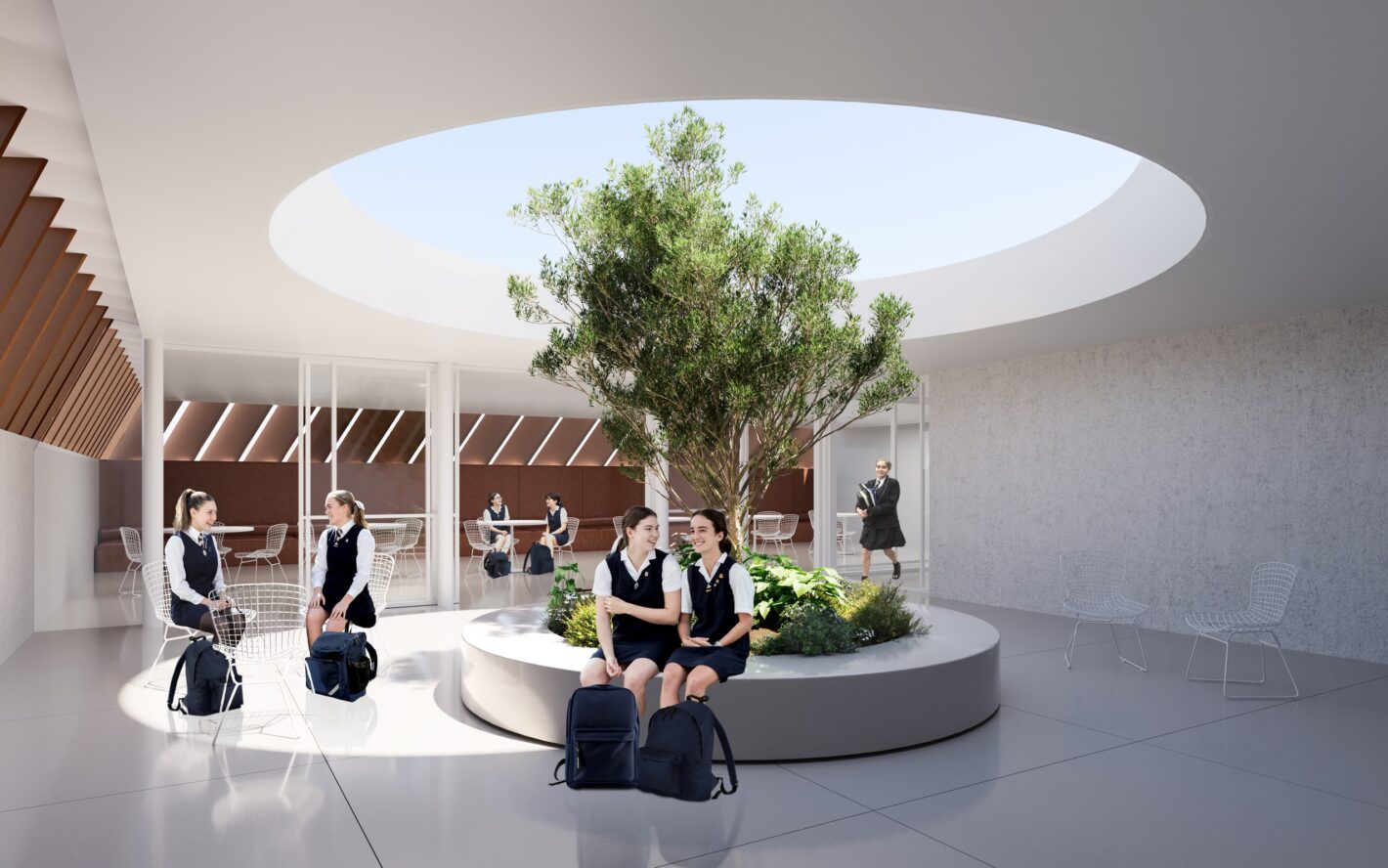Designed by architect Emil Sodersten and constructed in 1928 as the Gwydir Flats, the three-storey Wilkinson House is one of Sodersten’s earliest residential flat buildings. It’s a fine example of the Inter-War Georgian and Mediterranean Revival styles.
Purchased by SCEGGS in 1962, the building was converted to a boarding house for its students. Answering a need for greater facilities on a small campus, the building was converted to a learning centre in 1980. No longer able to meet the needs of the school, the design strategy will focus on providing large bright classrooms with generous circulation and excellent support facilities.
Expand ContentCognisant of retaining key heritage areas including the original foyer, our design minimises the visual changes to the external façade. That said, externally, the modifications include a new folded copper brise soleil roof and a steel framed glass core to the south (this houses a new lift and provides a clear circulation link to the main campus). The new roof, built in the same form as the original, takes inspiration from Sodersten’s drawings that show vertical seams on the roof cladding.
Importantly, the interior architectural design reconstructs the full interior including new concrete slabs that will make the building more robust and resilient. Additionally, the new terrazzo stairs and floors in the central zone reference the original stair and lightwell, while the ceiling lights and floor details in each classroom trace the outlines of the original walls.
This generous four-metre-wide central stair is located within the existing lightwell. Top and side lit, this establishes an amply proportioned, bright and safe way to circulate through the building. At the lower ground level, a basement is proposed to link Wilkinson House to the Centenary Sports Hall to the south, to effectively provide additional space for physical education activities.
Exploring a broad range of sustainability features, the architecture and interiors have been designed for longevity using robust solid-core materials that require minimal painted surfaces.
